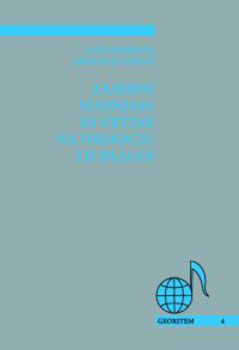Zasebni vodnjaki in vrtine na območju Ljubljane
The book includes water protection areas near the pumping stations of drinkable water on Ljubljansko polje, consequently in the City municipality of Ljubljana and in the water protection area of the water plant Brest in the neighbouring municipality of Ig. The area of Ljubljansko barje was also included in the study.Water wells have, besides the basic function of preserving water, also an aesthetic and symbolic meaning. Many fountains in public and private use are true works of art, but that wasn't the main interest of our study. We concentrated mostly on private water wells and bores, which are not registered and therefore not supervised.
Water wells were in the past primarily meant to provide water to the population of Ljubljana and its suburbs, but after building a public water supply network, they lost their primary role and are nowadays seen as sources of potential pollution of groundwater. Bores are a more modern occurrence. They are exposed to pollution in a lesser way, but they are also sources for the population to uncontrollably and egotistically use water from the groundwater, which is certainly the most important natural resource.
We differentiate three types of objects. Excavated objects are water wells with bigger diameters, which were made with digging shafts and possible refurbishment of the walls. They are suitable for the individual water supply from lesser depth. Bored-out objects are bores with smaller diameters, which are cut into the ground with the help of mechanical drills, which remove the bored-out material. They are suitable for the individual water supply from bigger depth. Rammed-in objects are holes with smaller diameters, where thinner, perforated pipes are rammed into the ground. They are also suitable for individual water supply, but from lesser depth.
All water catchments in the mentioned areas were compiled for the needs of an integrated control. With detailed field work we recorded 1686 water objects, from which 1294 were studied in detail and the rest of the water wells (392) are located in the gardening allotments south of Črnuče, on the left bank of the river Sava. 48,9 % of all objects are rammed-in 46,0 % are dug out and 2,0% are drilled out.
70 % of all in detail studied objects are located in the gardens or in the courtyards beside the residential property, more than 10% are located within gardening-allotments and a few percent are located between arable areas. Around 3/5 are currently used. In the past, water was mostly used for meeting the primary needs of humans and animals, but in the modern times it is mostly used for irrigation of arable land. The location of water wells near dung and dung holes is the most problematic. In some individual cases direct pollution of groundwater, caused by effluents of waste water into water wells, was ascertained.
For present water wells and bores, which are in use, we should make a planned analysis of the quality of water. Objects with low quality water should be reorganized and the abandoned objects filled or renovated coherent to the modern knowledge.
Downloads

Series
License

This work is licensed under a Creative Commons Attribution-NonCommercial-NoDerivatives 4.0 International License.
